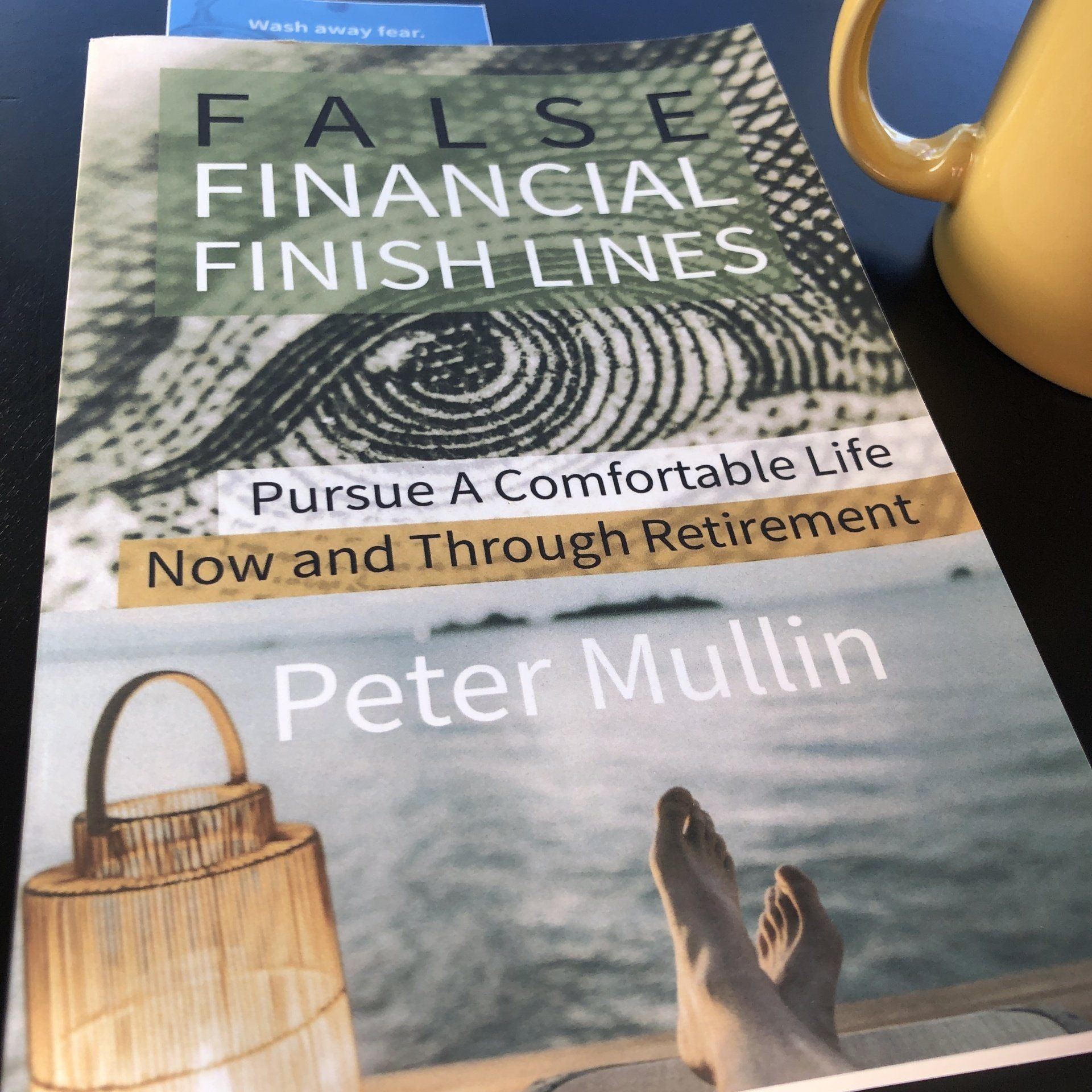The lesson of how the economist nearly drowned ... in a 4-foot quarry
Once upon a time, an economist was hiking with his friend. They came upon a lake
with a sign that read, “Warning: Swim at your own risk.” Next to the sign was a sign
explaining the history of the woods and the lake. The sign clearly stated that the
average elevation around the lake was 4-feet.
The economist stated that he was hot and would very much like to cool off. So the economist took his shoes and socks off and waded into the water. He took a few steps in and suddenly the 6-foot tall economist was in water over his head! He looked down and saw black water beneath him. He started to panic.
Now a drowning man does not typically thrash about. In fact, they can sink under the water without anyone taking much notice. His friend was along the shore and called for help. Suddenly, a Good Samaritan threw a life ring out. The economist resurfaced and was able to grab hold.
After the Good Samaritan pulled him to shore the economist thanked him. The Samaritan spoke, “Son, what mind do you have going out there when you know you can’t swim?”
The economist said, “That sign lies! It said this lakes average elevation was 4-feet in depth!”
“Sir. I owned much of this land before I donated it to the park not 20-years ago,” the good samaritan started.
“Then maybe you should tell them to fix this sign,” the economist interrupted, again.
The Good Samaritan finished explaining, “The sign is correct. The average elevation is 4-feet. But this is a big quarry.” He pointed to the rocky landscape surrounding them. “Up there is 100 feet above us. And down there,” he pointed to where the economist began to drown, “you go 100-feet below. If you stay near the edge you are right. But if you go to the middle you are very, very wrong.” Tell me,” said the Good Samaritan, “what is it you do for a living?”
“I am an economist!” he replied.
“Oh, so I don’t need to waste your time telling you all this. You’re used to being wrong!” The Good Samaritan smiled and walked away.
The Lesson
I heard Warren Buffett explain at his 50th Shareholders meeting in the CenturyLink arena (Omaha) that, “We think a company with an economist on staff certainly has one employee too many."
Many economists are good at reading numbers. But few get the economy right. Even more economists state predictions with no margin for error.
Predicting the economy is a lot like predicting the weather. Except with the weather there is some margin for error.
When was the last time you heard a loud opinion or headline state: “RECESSION LOOMING. ( 30-70% Chance )”?
Nope. The first part sells headline news. Balanced
opinions do not get as much air time.
Since 2010, I have heard that the next recession is looming. I have heard that our national debt will ruin us. That social security is going to go bankrupt. That interest rates are going to rise. No matter the calendar year. These topics cycle through. Eventually these predictions may play out. But likely not as most economists think.
At least when the weather report states that we can expect rain, we can clarify that rain is 70% likely. Then I’ll pack my umbrella.
The Punchline
I want to help you stare fear of financial loss in the face. I think you can do this by becoming an informed investor. Remember, there is no such thing as the perfect portfolio. I let client conversations and needs lead the way.
I started as a financial advisor in 2008. Just as the Dow Jones started a now infamous losing streak, and Lehman Brothers declared bankruptcy. And it got better. It historically does. But talk about being thrown into the deep end!
Even when things may feel scary we can still rely on a principle-driven process.
My investment process evaluates your circumstances and risk sentiment; it calls upon trusted resources and Nobel Prize-winning ideas like diversification (Awarded in 1990 to Harry Markowitz) and keeps you & your idea of a comfortable life at the center.
**Are you a client candidate? Individuals who want to take advantage of savvy tax planning solutions while looking to live comfortably should have $250,000 to invest, otherwise, I do have a great monthly rate for clients who are aspiring to accumulate $250,000 and more!**
Until next time, carry on!
Credit/Muse/Thanks: Nate Silvers, Signal and the Noise (book)
Peter Mullin is an independent financial advisor registered through LPL Financial. He lives in Rogers, MN with his family. He was born and raised in St. Cloud, MN. Mullin Wealth Management is headquartered in Saint Cloud, MN.
The opinions voiced in this material are for general information only and are not intended to provide specific advice or recommendations for any individual.
Investing involves risk including loss of principal.
No strategy assures success or protects against loss.
- Mullin's take on the "4% Retirement Rule"
- Navigate "Bad Portfolio Weather"
- Tips to Optimize Social Security







Articles and Assets
What are your Priorities?
Well it’s the end of the year. I just searched on Google for “market outlook 2018.” I came up with a little over 58-million “results.”
So should you be investing in stocks in 2018? The quick answer: It’s likely a prudent part of your portfolio. But it depends on your circumstances, right?
It’s apparently popular to throw your hat in the ring.
A mantra that you hear among disciplined professionals is to “stay the course.”
Then you hear “sell high, buy low.”
Who’s right?
The relief of a disciplined strategy is that it can be tailored to you. And tailor we think you should.
Yes, it’s possible that an investor may not utilize stocks in their portfolio at all. Or you may decide to go “all in” with a diversified stock portfolio.
(Side effects from tailoring a strategy may include increased confidence & persistence, apathy toward daily market reports, and increased focus on what really matters.)
Let’s begin with the “Why” of investing for you. Then you can request 15-minutes on the phone discuss your “how.”
So “Why Should You Invest”
Life changes and our “why” of investing ought to transform with life. Some invest for sport – they like the risk/reward of investing – they’re in it for the thrill. I don’t hang with this crowd.
Most of us ought to invest for things we want. Our money & our goals are serious. By investing in a diversified portfolio we can pursue things we want.
1. Living A Comfortable Retirement: Retirement is a noun. It’s up to you to really design and live a retirement that reflects you.
2. Purchasing a Home: Home is a place to live. It can take a down payment.
3. Passing an Inheritance on to Family:
4. Student Loan Shield: This idea is important for many Millennial graduates. Student loans can dominate your budget. But instead of accelerating those payments, what if you paid your required payments, and then invested the additional money that you were going to pay against your loan balance?
5. Emergency Reserves: You probably have read that it’s prudent to keep a relative healthy amount of cash in your checking/savings. Once you’ve achieved that, then you can consider investing additional funds. Go a step further and consider a non-retirement account for you and your house. You can spend this on cars, vacations or use it just as described in #4.
The Dow Jones has seen positive results, so far, in 2017. It’s unusual and sort of uncomfortable as the independent financial advisor. Why is it uncomfortable?
What would sting & linger longer? Finding $20 in the parking lot? Or finding a $20 parking fine on your windshield?
We’ve been finding a lot of metaphorical “$20’s” (i.e. “positive results”) in our portfolios this year. So the second we find a parking fine (or a few in a row) we’ll be sure to ask if stocks are still the right place to park our money.
Complacency can work against us, Dear Clients. Just keep recalling your long-haul strategy and your “why” of investing.
***
Peter Mullin is an independent financial advisor registered through LPL Financial. He lives in Rogers, MN with his family. He was born and raised in St. Cloud, MN. Mullin Wealth Management is located in Waite Park, MN.
The opinions voiced in this material are for general information only and are not intended to provide specific advice or recommendations for any individual.
Investing involves risk including loss of principal.
There is no guarantee that a diversified portfolio will enhance overall returns or outperform a non-diversified portfolio. Diversification does not protect against market risk.
All performance referenced is historical and is no guarantee of future results.
All indices are unmanaged and may not be invested into directly. No strategy assures success or protects against loss.









